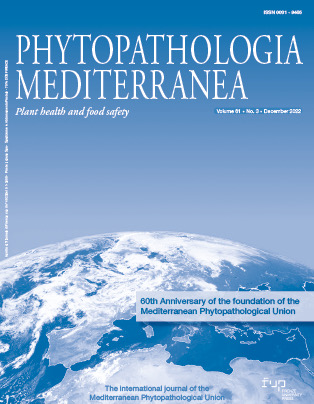Recent research accomplishments on early detection of Xylella fastidiosa outbreaks in the Mediterranean Basin
Published 2023-01-13
Keywords
- Climatic suitability risk maps,
- diagnostics,
- molecular approaches,
- quarantine plant pathogens,
- sequential adaptive survey
How to Cite
Abstract
Xylella fastidiosa is a major transboundary plant pest, causing severe socioeconomic impacts. Development of preventive strategies and methods for surveillance, early detection, monitoring, and accurate diagnosis of X. fastidiosa and its vectors, are keys to preventing the effects of this plant pathogen, and assist timely eradication or optimisation of containment measures. This review focuses on approaches for early detection of X. fastidiosa in the Mediterranean Basin, including development of climatic suitability risk maps to determine areas of potential establishment, and epidemiological models to assist in outbreak management through optimized surveillance and targeted responses. The usefulness of airborne hyperspectral and thermal images from remote sensing to discriminate X. fastidiosa infections from other biotic- and abiotic-induced spectral signatures is also discussed. The most commonly used methods for identifying X. fastidiosa in infected plants and vectors, and the molecular approaches available to genetically characterize X. fastidiosa strains, are described. Each of these approaches has trade-offs, but stepwise or simultaneous combinations of these methods may help to contain X. fastidiosa epidemics in the Mediterranean Basin.







